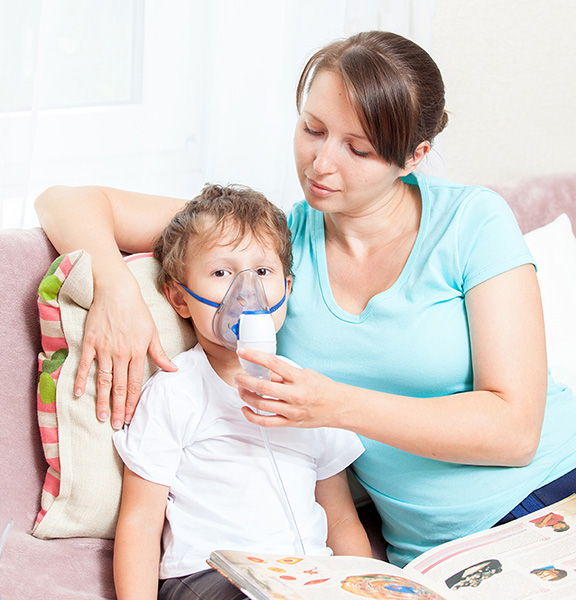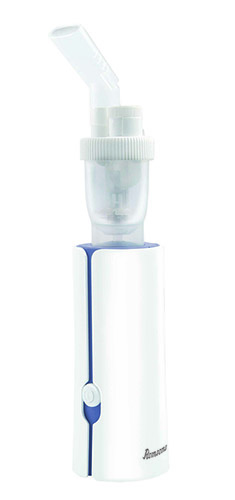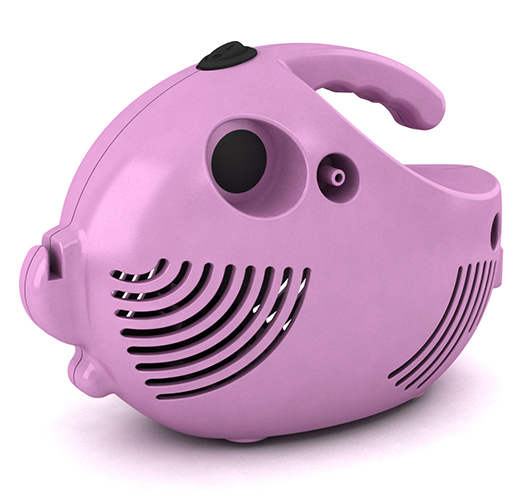Aerosol therapy

Did You Know?
- The first powered or pressurized inhaler was invented in France by Sales-Girons in 1858.
- The particle size (expressed as mass median aerodynamic diameter) is of critical importance as the drug delivery.
- It is important to use an aerosol device that generates drug particles in the respirable range (1–5 μm) to maximize aerosol delivery to the lungs.
- Three key terms describe how well a patient follows a prescribed aerosol therapy: (1) Adherence, (2) Compliance, and (3) Contrivance.
- Even with the best technique, only 10% to 20% of the total drug makes it to the large airways and only 5% of the drug reaches the small airways.
- Patients may use aerosol therapy for a few days or a lifetime.
- Over the years, use of aerosolized medications has increased even in children.
Aerosol therapy is a medical treatment used to treat a variation of breathing conditions. A proper understanding of principles and applications of aerosol therapy is required for its effective use in numerous conditions. It can be used in the treatment of illnesses that impact airway function, i.e. asthma and chronic obstructive pulmonary disorder (COPD), Aerosol therapy delivers small amounts of medicine into the lungs. These medications are used to relax the muscles in the airway to make breathing easier and fight infections. Depending on their illness or condition, patients may use aerosol therapy for a few days or a lifetime. For instance, patient with an acute respiratory illness like bronchitis or pneumonia may use aerosol therapy as a short-term treatment whereas the patients with a chronic respiratory illness such as asthma or COPD may use aerosol therapy as a long-term treatment for their condition. Aerosol therapy requires the use of compressor or a nebulizer. A compressor or a nebulizer is a machine that converts liquid medication into a fine, breathable mist so it can easily be inhaled directly into the lungs of the patient.
Romsons has a wide range of nebulizers catering to different segment patients by understanding their actual need.

Angel (GS-9023) is an ultra-compact and light-weight Nebulizer System that features a piston pump. It ensures effective medication delivery and comes with easy to use one button operation, uniquely compact design to efficiently deliver the prescribed medication to the bronchial lung passages in the form of aerosol mist for easy inhalation. The particle size (expressed as mass median aerodynamic diameter) is 4 μm, which is of critical importance, to penetrate the droplet deep in the lung passage.

Portneb (GS-9029) is our hand-held and tubeless nebulizer for instant relief. It is a type of inhaler that sprays a fine, liquid mist of medication. Its low noise design makes it a choice for nebulization anywhere, that comes with a patented VALVE ADJUSTABLE TECHNOLOGY.

Microgen, especially designed for Pediatrics, toy shape “Cartoon fish appearance” compressor which makes it attractive to kids and easy to carry. It’s one button operation makes it easy to use, Comes with a thermal protector; super heat resistant and is both attractive and economic.
Case Study
For many drug therapies, there is potential to use the respiratory system as an alternative route for drug delivery. Aerosol therapy can provide many advantages over conventional therapy. Given that respiratory diseases are the commonest causes of critical illness, use of aerosol therapy to provide high local drug concentrations with minimal systemic side effects makes this route an attractive option. To date, limited evidence has restricted its wider application. The efficacy of aerosol drug therapy depends on drug-related factors (particle size, molecular weight), device factors, patient-related factors (airway anatomy, inhalation patterns) and mechanical ventilation-related factors (humidification, airway).
According to studies, it has been observed that Inhaled medication is essential for the treatment of patients with asthma and chronic obstructive pulmonary disease (COPD). The effects of these medications depend, among other factors, upon the amount of the drug deposited in the lower airways. This is determined by the patient’s inhalation technique, which is influenced by characteristics of the individual inhaler devices and the medication therein.
At times, Non-adherence to prescribed medications results in disease instability and poor clinical control, with increases in hospital admissions, emergency room visits, school/work absenteeism, morbidity, and mortality. Poor patient adherence to therapy can be due to lack of cognition, competence, or contrivance. Patients who have not been trained or fail to understand use of drug and device combinations (cognition) often do not have the ability to use an aerosol device correctly (competence).
Many patients have the competence to use the device correctly and know why they should use the device in the way they were taught; however, they still contrive to use it in an ineffective and suboptimal manner that reduces its efficiency and effectiveness. Ensuring effective aerosol therapy and optimizing its role in disease management involve not only delivery of aerosolized medications to the lungs, but also understanding why, when, and how to use the medications, competence to use the device, motivation to adhere to therapy will ensure success of effective aerosol therapy.
